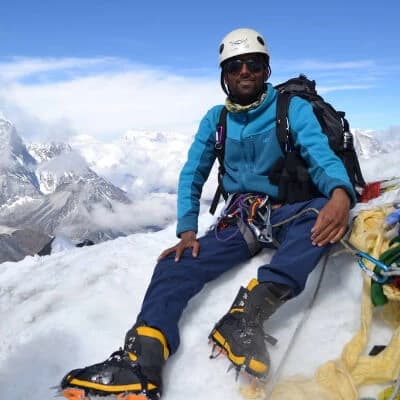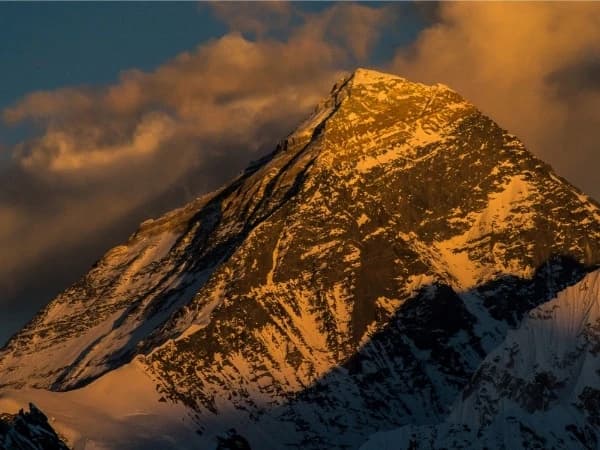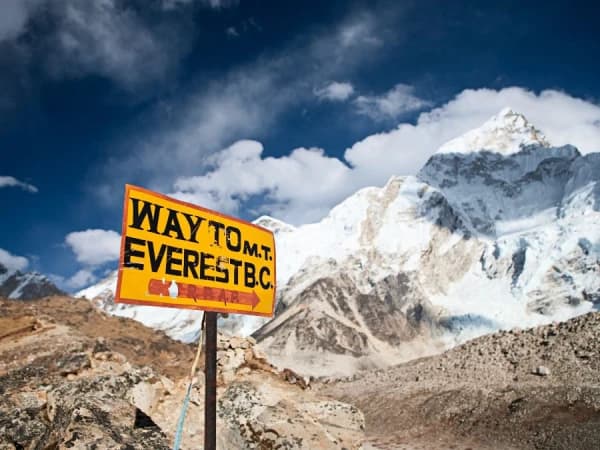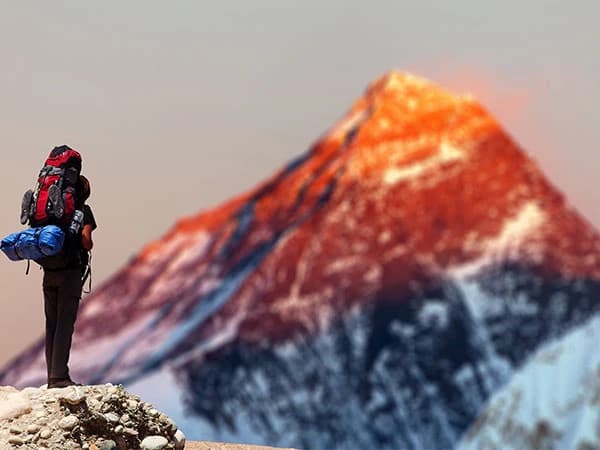Understanding the Trekking Conditions
As we mentioned above, one should be fully informed about the destination. Another major thing that can’t be left out is the variation of climate through the trek. As the climate varies from one zone to another.
Basically, the Annapurna Circuit Trek passes through multiple climate zones, making it one of the most geographically and environmentally diverse treks in the world. Understanding these climate-changing zones helps with proper packing, clothing, and expectations.
The trek takes you from 600 meters (subtropical) to over 5,400 meters (alpine/arctic) — crossing rivers, forests, valleys, and glaciers. Here's a breakdown of the major climate zones you’ll experience:
- Subtropical Zone (600–1,500 m)
Example Locations: Besisahar, Bhulbhule
Climate: Warm, humid, green
Vegetation: Rice fields, banana trees, dense forests
Temperature: 20–30°C in the day, 15–20°C at night

- Temperate Zone (1,500–2,500 m)
Example Locations: Tal, Chame
Climate: Cool and mild
Vegetation: Pine, oak, and rhododendron forests
Temperature: 10–20°C in the day, 5–10°C at night
- Subalpine Zone (2,500–3,500 m)
Example Locations: Upper Pisang, Manang
Climate: Dry, windy, colder
Vegetation: Bushes, junipers, thinning forest
Temperature: 5–15°C in the day, -5–5°C at night
- Alpine Zone (3,500–4,500 m)
Example Locations: Yak Kharka, Thorong Phedi
Climate: Cold, windy, thin air
Vegetation: Sparse; mostly rocks and shrubs
Temperature: 0–10°C in the day, -10 to -5°C at night.
- Arctic/High Himalayan Zone (4,500–5,416 m)
Example Locations: Thorong La Pass
Climate: Harsh, snowy, extreme cold
Vegetation: None – ice, rock, snow
Temperature: -10 to -20°C (can feel colder with wind chill)
Availability of Supplies Along the Trail
While heading to the trek destination, one should need to collect all the necessary trekking supplies like layers, gear, snacks, toiletries, medicine, etc. As for the availability of supplies along the route, trekking gear and all the supplies are available in Besisahar to a limited extent up to Chame and Manang.
One should check and restock all the most needed supplies in Besisahar. After crossing Chame and Manang, the trekkers wouldn't be able to find the supplies. Beyond Yak Kharka, Thorong Phedi and Thorong La Pass, the supplies will be available in very limited and also at a high cost, sometimes the price rises up to double of original price.
It is best to restock the stock supplies at a lower region where they are available. Otherwise, it will be very difficult to find the supplies you are looking for as the elevation rises. The problem with a lack of supplies in the higher regions is due to the remoteness and transportation difficulties.
Do You Need to Hire a Porter?
Another significant thing that you need to consider while planning the Annapurna Circuit Trek packing list is whether to hire a porter to carry your bag or you will carry the luggage by yourself.
Hiring a porter is common and highly recommended by most of the trekkers.
Due to the long duration trail and high altitudes, hiring a porter will make it easier to reach the trekking destination. You can hire porters according to our needs. Generally, a porter carries up 12-15 kg (26 to 33 lbs) of baggage per trekker.
You should hire a porter through a trusted travel agency, which will be safer and you will be able to find experienced and qualified porters. There are different ways of hiring porters for the trek. You can hire on a daily wage basis or for the whole trek.
- Hiring on a Daily Wage Basis
While hiring a porter for a daily wage, you will need to pay about US$ 15 to US$ 20 per day. The cost may vary according to the travel agency. It may also vary between the experienced and the new ones.
- Total for 14-16 Days (Standard Trek Duration)
Hiring a porter for a standard trek duration, which is around 14-16 days. It will cost about US$ 210 to US$ 300 (depending on the experience of the porter). The package is mostly used by the trekkers who do the standard trek circuit.
So, undoubtedly, hiring porters would be greatly helpful during the trek, but if you are carrying your own bags, then you will have to put great concern on packing choices. The weight of the backpack greatly affects your trekking experience.
Your packing choices should be very simple, light and properly optimized to make your Himalayan adventure a comfortable and memorable experience.
Essential Clothing for All Seasons
During the trek, the adventurers need to maintain proper layering for clothing. The clothes should be comfortable and relevant to every altitude point. Due to the variation of the climatic zones, the weather conditions swing from freezing cold mornings to warm sunny afternoons.
It is crucial to follow the layering system, which provides great help in trekking. Starting from the base or inner layer. This layer of clothes is worn next to our skin. The inner layer should be sweat-wicking.
You should avoid cotton because it remains wet and doesn't dry immediately. You can also use thermal tops and bottoms as inner layers. The second layer is also known as the middle layer. These layers of clothes trap our body and provide warmth.
For this layer, you can use fleece jackets. These may be lightweight but very effective. The last layer is the shell layer, which is also known as the outer layer. For the outer layer, you should be wearing the clothes that protect you from wind, rain and snow.
General Clothing Recommendation for Annapurna Circuit Trek Packing List
- Lightweight base layer (long sleeve, quick-dry)
- Thermal layers (for sleeping or a cold day at higher altitudes)
- T-shirt or full shirt
- Insulation layer: fleece pullover or jacket
- Stretchable softshell jacket (a more breathable active layer)
- Windproof hard shell jacket
- Waterproof/windproof pants
- Warm trekking pants with insulation (for higher altitudes)
- Hiking in short or lightweight pants
- Synthetic leggings or tight
- Several pairs of undergarments
- Clothing for Cold Mornings to Late Afternoon

In cold mornings, you should wear full layers, from the base layer, insulation, to outer shell clothes. In the middle of the day or on a sunny day, you can remove the insulation shell. A base or light shirt will be enough when the temperature is warm.
In the late afternoon, you need to add all the layers as the temperature starts to drop, especially at higher altitudes. As a note, you should always keep jackets easily accessible in your day pack.
Footwear Recommendations
Your footwear can make or break your trekking spirit. That’s it is very important to give it top priority in your Annapurna Circuit Trek Packing list.
- Waterproof Trekking Boots (High Ankle): The boots must be broken in before trekking. When choosing boots, make sure they have sturdy soles for the rocky and snowy trails.
- Trekking Socks: You must carry 3-5 pairs of socks for the trekking period. Swollen and synthetic socks are preferred. It is best to avoid cotton socks; cotton socks absorb sweat and water like a sponge. So, your feet will stay damp and cold at higher elevations.
- Camp Shoes: You should carry camp shoes, sandals, crocks, or slippers for a relaxing time at the teahouses. This will let your feet breathe after long days of trekking.
Essential Accessories
While trekking, everyone should carry essential accessories. It is often the smallest gear that delivers the biggest comfort on the trekking trail. Below, we have mentioned some of the most needed accessories for trekking.
- Gloves: They are for warmth and wind protection. They should have an inner fleece and a waterproof outer layer.
- Warm Hat: You need to bring a warm hat to maintain a heat level. They should be made of wool fleece and must be ear-covering.
- Sun Cap or Sports Cap: It is needed to get UV protection at higher altitudes.
- Scarf: During your trek, scarf can be used for multiple purposes. It can be used to get protection from dust and wind or for warmth. It is lightweight and quickly dries in the sun.
- Sunglasses: These are the most essential during the trek. Sunglasses help in eye protection at altitudes and also help in UV blocking.
Annapurna Circuit Trek Packing List: Gear Checklist
Beyond the footwear, clothing and accessories, your core trekking gear is what keeps you moving comfortably and helps you get proper rest. Here is our Annapurna Circuit Trek Packing List suggestion for a gear checklist that covers all essentials you need to navigate this circuit route with confidence and ease.
- Backpack and Duffel Bag
- Bag Size Recommendation

If you're using a porter, your main bag should be up to 50- 65 liters (duffel bag). It is carried by a porter. As a daypack/backpack, you should bring one with a capacity of 20-30 liters, which is an ideal size.
If you are not using a porter
If you are not having any porter, you should prepare only a backpack that has the capacity to hold all your belongings. It should fit all of your clothing, gear, food, water and sleeping bag. When choosing a backpack, you should choose one with a padded hip belt and adjustable straps for comfort.
- Sleeping Bag Rating Advice
As for rating the sleeping bag, it should be comfortable with a minimum rating for the temperature of -10°C to -15°C. During the nights above or near Thorong Phedi, the temperature can drop below -10°C.
So, a sleeping bag is a must in this Annapurna Circuit Trek packing list. Down sleeping bags are warmer, lighter in weight, but can be costlier. Synthetic sleeping bags are bulkier, but they are cheaper in cost and also effective. It is best to use a sleeping bag liner for extra warmth and hygiene.
Trekking poles are highly essential for the Thorong La Pass ascent and descent. It is recommended for reducing knee strain while walking down a hill. Trekking pole also helps in the improvement of balance on snowy trails. Lightweight aluminum or carbon fiber is an ideal and preferred trekking pole for Himalayan treks.
- Water Purification Tools
- Water purification tablets like iodine, chlorine dioxide are mostly used during Himalayan treks. They are cheap in price and light in weight.
- SteriPEN is a UV light tool. It is quick and effective to use for water purification.
- Portable Filters like Sawyer Mini and LifeStraw are also used for water purification. It filters bacteria and protozoa.
Other Essentials
- Headlamps are mostly used at night and in the early morning. You should carry it with spare batteries.
- Sunglasses are used for UV and sun protection
- Refillable bottles/Bladders used to carry safe drinking water. It should be able to carry at least 2-3 liters of water.
- Dry bags or zip locks are used for organizing gear and for protection against moisture
- Rain cover for the backpack
- Powerbank
- Multi-tool or Swiss Army knife
- Headphones or earplugs
- Book, magazines, or journals
- Map and GPS device
Personal Hygiene and Toiletries
Most teahouses have shared bathrooms, often squat toilets and cold-water taps. They typically don’t provide toilet paper, soap, or towels, so you should bring your own.
What to Bring:
- Toilet paper rolls (2–3; can buy more in Chame/Manang)
- Hand sanitizer (alcohol-based, minimum 60% content)
- Biodegradable soap (for hands and quick washes)
- Quick-dry towel (small to medium size)
- Wet wipes (unscented, biodegradable preferred) – lifesaver on no-shower days
- Toiletry bag (to keep it all organized)
Minimal but Essential Toiletries:
- Toothbrush + small toothpaste (travel-size preferred)
- Deodorant (small stick or cream)
- Lip balm to prevent cracked lips in dry, windy zones
- Sunscreen (SPF 30+) Face, neck, hands
- Nail clippers are useful for longer treks
- Tweezers are essential for blisters/splinters
- Small comb or hair brush
- Feminine hygiene products: pads/tampons/menstrual cup and a ziplock for disposal
Here are some of the necessary tips for packing personal hygiene and toiletries:
- Pack small: Use mini bottles or transfer items into travel-size containers
- Keep clean: Use hand sanitizer after every bathroom use and before meals
- Be eco-friendly: Choose biodegradable products and carry out all trash.
First Aid and Medications
In the Annapurna Circuit Trek, you will be far from the hospitals and medical facilities. Especially after Manang and while crossing over Thorong La Pass. So, it is a necessity to include general and altitude-related medication for your Annapurna Circuit Trek packing list.

High Altitude - Specific Medicine
- Diamox (Acetazolamide): It helps to prevent or reduce the symptoms of Acute Mountain Sickness(AMS).
Dosage: 125- 250 mg twice a day (you should consult your doctor). Start the medicine ½ day before going above 3,000 m above sea level.
Possible Side Effects: Frequent urination and changes in taste.
- Ibuprofen or paracetamol: It helps to reduce headache, body aches and fever. These health issues are common in high altitudes
Blister Care and Foot Protection
- Blister plaster acts as a second skin.
- Moleskine or leukotape for hot spots.
- Antiseptic cream/iodine to clean wounds
- Small scissors/ tweezers to pop blisters and treat safely.
Hydration & Rehydration
- ORS (Oral Rehydration Salts) are used for dehydration, diarrhea, or exhaustion
- Electrolyte powder/tablets help maintain salt balance at altitude
- Water purification tablets or filters are essential to avoid stomach issues
Basic First Aid Kit Essentials
-
An elastic bandage: used for sprains or in joint support
-
Thermometer (optional): to monitor fever
-
Anti-diarrheal tablet: used for gut issues
-
Antihistamine: for skin allergies
- Antibiotics: In case of infection
Food, Snacks and Water Strategy
While trekking, you will burn a lot of calories. Thus, you should have lightweight and high-energy foods and snacks that help to provide energy throughout long trekking hours.
Best Snacks to Bring
- Energy bar
- Dried fruit
- Nuts and trail mix
- Chocolates
- Instant noodles or soup packets
- Cookies/ biscuits
Refill and Water Purification
There are many water resources found throughout the trek. Most trekkers buy water at the tea houses. There are also village taps and mountain streams. However, even if the water seems clean, it might not be bacteria-free. That’s why it is essential to treat water before drinking from such sources.
Other Options: Tea, Coffee and Electrolytes
- Comfort drinks
- Instant coffee
- Ginger tea, lemon tea, or masala tea
Electrolyte Support
- ORS packet
- Electrolyte powder or tablet
What Not to Pack?
When it's a long and difficulty trek, we should not carry heavy items or any valuable ornaments. You should also avoid things you won’t use daily during the trek. Don’t bring cotton clothing, bulky jackets, too many shoes, heavy books, large towels, unnecessary electronics, too many toiletries, excessive snacks, jeans or casual pants, etc.
If you are planning to bring drones, you will need special permits to fly them. Also, don’t play music on a portable speaker at high volume, which may disrupt the wildlife and peaceful mountain life.
In the end, the most important rule for the Annapurna Circuit Trek packing list is to pack light, but pack smart. Choose versatile, essential items and avoid overpacking and every extra kilo makes a difference on the trail. Tailor your packing list to the best time, season,, weather, and whether you’ll be carrying your own backpack or hiring a porter.
Keep it simple, but don’t leave out the basics. And if you forget something, there’s no need to worry. Kathmandu and Pokhara are well-stocked with rental shops and trekking stores that offer everything from gear to clothing.
With thoughtful planning and a balanced pack, you’ll be well-prepared to enjoy one of the world’s most breathtaking trekking adventures.









